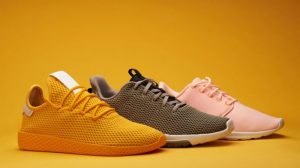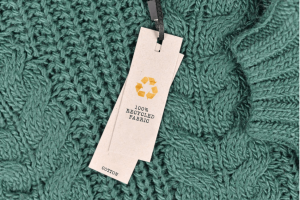
Step into the world of Sustainable fashion trends 2025 where eco-friendliness meets style in a harmonious blend of innovation and consciousness. Get ready to explore the exciting evolution of fashion towards a more sustainable future!
Let’s dive into the upcoming trends that will shape the fashion industry in the year 2025, highlighting key factors, innovative materials, zero-waste practices, ethical production, technological advancements, and the perfect balance of style and sustainability.
Sustainable Fashion Trends 2025

Sustainable fashion is a growing movement within the fashion industry that focuses on reducing the environmental impact of clothing production, promoting ethical labor practices, and increasing transparency throughout the supply chain. It emphasizes the use of eco-friendly materials, recycling, upcycling, and overall sustainability in the design and manufacturing process.Key factors driving sustainable fashion trends for 2025 include the increasing consumer demand for ethically produced and environmentally friendly clothing, government regulations promoting sustainability, technological advancements in eco-friendly materials and production methods, and the rise of circular fashion models that prioritize reuse and recycling.In comparison to current sustainable practices, projected trends for 2025 show a greater emphasis on transparency and traceability in the supply chain, increased use of innovative sustainable materials such as lab-grown leather and bio-based fabrics, the mainstream adoption of circular design principles, and a shift towards rental and second-hand fashion models to reduce waste and promote a more circular economy.
Eco-friendly Materials
In the world of sustainable fashion, the use of eco-friendly materials plays a crucial role in reducing the environmental impact of the industry. These innovative materials not only help in preserving the planet but also contribute to creating stylish and ethical clothing.
- Organic Cotton: Organic cotton is grown without the use of harmful pesticides and chemicals, making it a much more sustainable option compared to conventional cotton. Brands like Patagonia and Eileen Fisher are known for using organic cotton in their collections.
- Tencel (Lyocell): Tencel is a fabric made from wood pulp, typically sourced from eucalyptus trees. It is known for its softness, breathability, and biodegradability. Brands like Reformation and Mara Hoffman have incorporated Tencel into their designs.
- Piñatex: Piñatex is a sustainable alternative to leather made from pineapple leaf fibers. It is cruelty-free, durable, and biodegradable. Brands like Hugo Boss and H&M have embraced Piñatex in their products.
- Recycled Polyester: Recycled polyester is derived from post-consumer plastic bottles, reducing the need for virgin polyester production. It helps in diverting plastic waste from landfills and oceans. Brands like Adidas and Stella McCartney use recycled polyester in their activewear lines.
Zero-Waste Fashion
Zero-waste fashion is a sustainable approach to designing and producing clothing that eliminates textile waste throughout the entire process, from the initial design stage to the end of the garment’s life cycle. This method focuses on using resources efficiently and minimizing environmental impact by creating garments that generate little to no waste.
Techniques and Strategies for Zero-Waste Fashion
- Pattern Making: Designers can utilize innovative pattern-making techniques such as draping, cutting fabric in a way that maximizes the use of every piece, and creating modular designs that allow for easy disassembly and reassembly.
- Upcycling and Recycling: By repurposing and reusing materials from old garments or textile scraps, designers can reduce waste and create unique, one-of-a-kind pieces.
- Efficient Production Processes: Implementing lean manufacturing practices and utilizing technology like 3D printing can help minimize waste during the production phase.
Impact of Zero-Waste Fashion by 2025
Zero-waste fashion has the potential to revolutionize the industry by 2025, leading to a significant reduction in textile waste and carbon emissions. As more designers and brands adopt zero-waste practices, we can expect to see a shift towards a more sustainable and circular fashion economy. Consumers are becoming more conscious of the environmental impact of their clothing choices, driving demand for zero-waste garments and encouraging the industry to prioritize sustainability.
Overall, zero-waste fashion has the power to reshape the way we think about clothing production and consumption, paving the way for a greener and more responsible future.
Ethical Production Practices

In the world of sustainable fashion, ethical production practices play a crucial role in ensuring that clothing is not only eco-friendly but also socially responsible. Brands are increasingly recognizing the significance of fair labor conditions and wages in their supply chains to create a positive impact on both people and the planet.
Importance of Ethical Production Practices
Ethical production practices involve treating workers with respect, providing safe working conditions, and ensuring fair wages. By prioritizing ethical practices, brands can contribute to the well-being of workers and communities, ultimately fostering a more sustainable and equitable fashion industry.
Ways to Ensure Fair Labor Conditions and Wages
- Implementing transparent supply chains to trace the origins of materials and ensure ethical practices at every stage of production.
- Auditing factories and suppliers regularly to monitor compliance with labor laws and ethical standards.
- Collaborating with certified fair trade organizations to guarantee fair wages and working conditions for garment workers.
- Empowering workers through education and training programs to enhance their skills and promote job security.
Consumer Awareness and Industry Impact
As consumers become more conscious of the ethical implications of their purchasing decisions, brands are under pressure to adopt ethical production practices. The demand for transparency and accountability is driving positive changes in the industry, encouraging brands to prioritize ethical sourcing and production methods.
Technology and Sustainability
Technology plays a crucial role in advancing sustainable practices in the fashion industry. From innovative materials to production processes, technological advancements are reshaping the way we approach sustainability in fashion.
3D Printing in Sustainable Fashion
- 3D printing allows for more precise and efficient production, reducing waste in the manufacturing process.
- Designers can create intricate and complex designs with minimal material usage, promoting sustainability in fashion.
- By using biodegradable materials in 3D printing, the environmental impact of fashion production can be significantly reduced.
AI in Sustainable Fashion
- Artificial intelligence is being used to optimize supply chains, reducing overproduction and minimizing waste in the fashion industry.
- AI algorithms can analyze consumer data to predict trends accurately, leading to more sustainable and demand-driven production.
- Virtual fitting rooms powered by AI technology help reduce returns and improve the overall sustainability of the fashion retail sector.
Future Technological Advancements in Sustainable Fashion
- Advancements in nanotechnology could lead to the development of self-cleaning and self-repairing fabrics, promoting durability and reducing the need for frequent replacements.
- Blockchain technology can enhance transparency in supply chains, ensuring ethical practices and sustainable sourcing of materials.
- Augmented reality (AR) and virtual reality (VR) applications could revolutionize the way consumers interact with fashion, promoting a more sustainable and personalized shopping experience.
Clothes and Shoes
In the realm of sustainable fashion trends for 2025, the focus on clothes and shoes is paramount. Designers are pushing boundaries to create innovative pieces that not only look good but also have a positive impact on the environment.
Sustainable Clothing Design
- Modular Clothing: Pieces that can be mixed and matched, allowing for versatility and longevity in a wardrobe.
- Biodegradable Fabrics: Materials like Tencel, hemp, and organic cotton that can easily break down at the end of their life cycle.
- 3D Printing: Utilizing technology to create customized clothing items, reducing waste and energy consumption.
- Upcycled Fashion: Repurposing old garments into new designs, giving new life to discarded clothing.
Sustainable Materials in Shoe Production
- Recycled Plastic: Turning plastic waste into durable and stylish footwear options.
- Piñatex: A sustainable alternative to leather made from pineapple leaf fibers, offering a cruelty-free option for shoe production.
- Cork: Lightweight and eco-friendly material used for shoe soles, known for its durability and comfort.
- Bamboo: A fast-growing plant that can be used to create breathable and biodegradable shoe materials.
Intersection of Style, Comfort, and Sustainability in Footwear Design
- Eco-Friendly Dyes: Using natural and non-toxic dyes to add color to shoes without harming the environment.
- Comfort Technology: Incorporating cushioning and support features without compromising on sustainability.
- Vegan Options: Providing cruelty-free footwear choices that are stylish, comfortable, and sustainable.
- Zero-Waste Manufacturing: Implementing production processes that minimize waste and reduce the environmental impact of shoe production.
Conclusion
As we conclude our journey through Sustainable fashion trends 2025, it’s evident that the future of fashion is bright with a focus on sustainability, ethics, and innovation. Stay tuned for the exciting changes that lie ahead in the world of eco-friendly style!
Questions Often Asked
What are some key factors driving sustainable fashion trends for 2025?
Factors such as consumer demand for eco-friendly products, advancements in technology, and increased awareness about environmental issues are driving sustainable fashion trends for 2025.
How does zero-waste fashion contribute to sustainability?
Zero-waste fashion aims to eliminate textile waste by using innovative design techniques that maximize fabric usage, reducing the environmental impact of the fashion industry.
Why is ethical production important in sustainable fashion?
Ethical production ensures fair labor conditions, wages, and treatment of workers, aligning with the principles of sustainability and social responsibility in the fashion industry.

.jpg?w=700)



